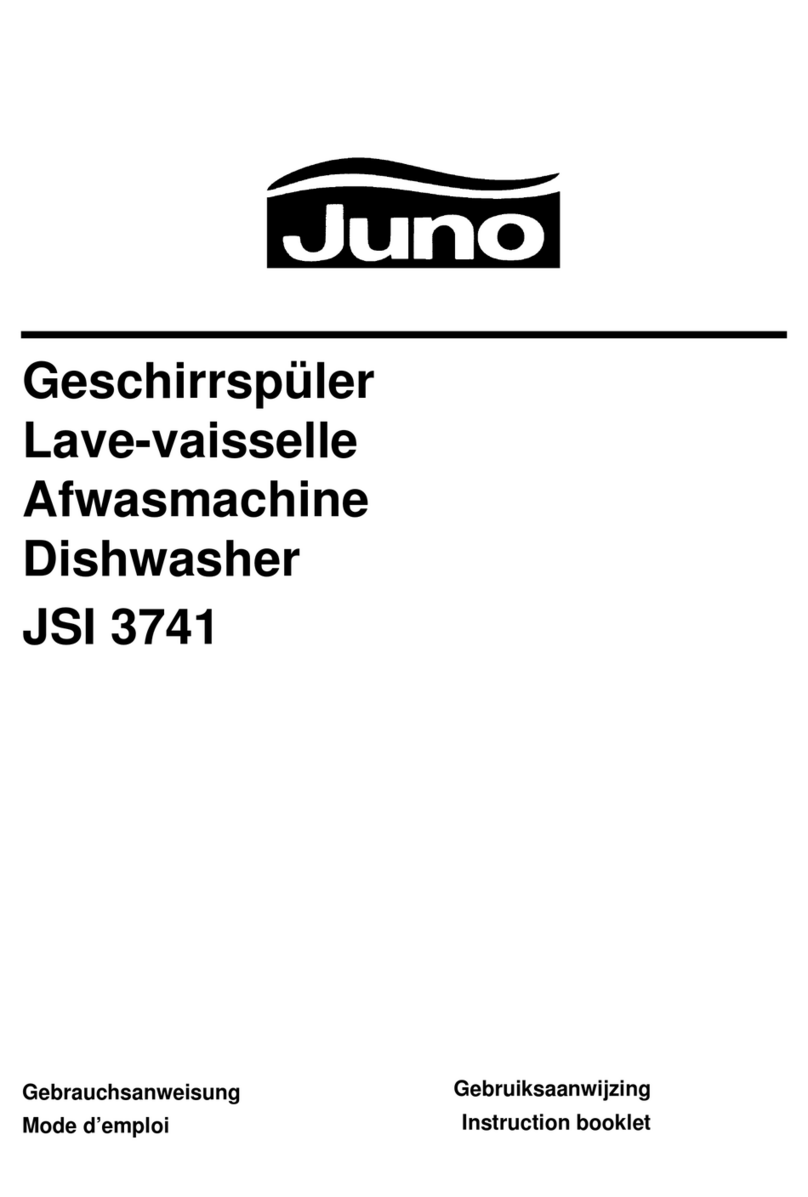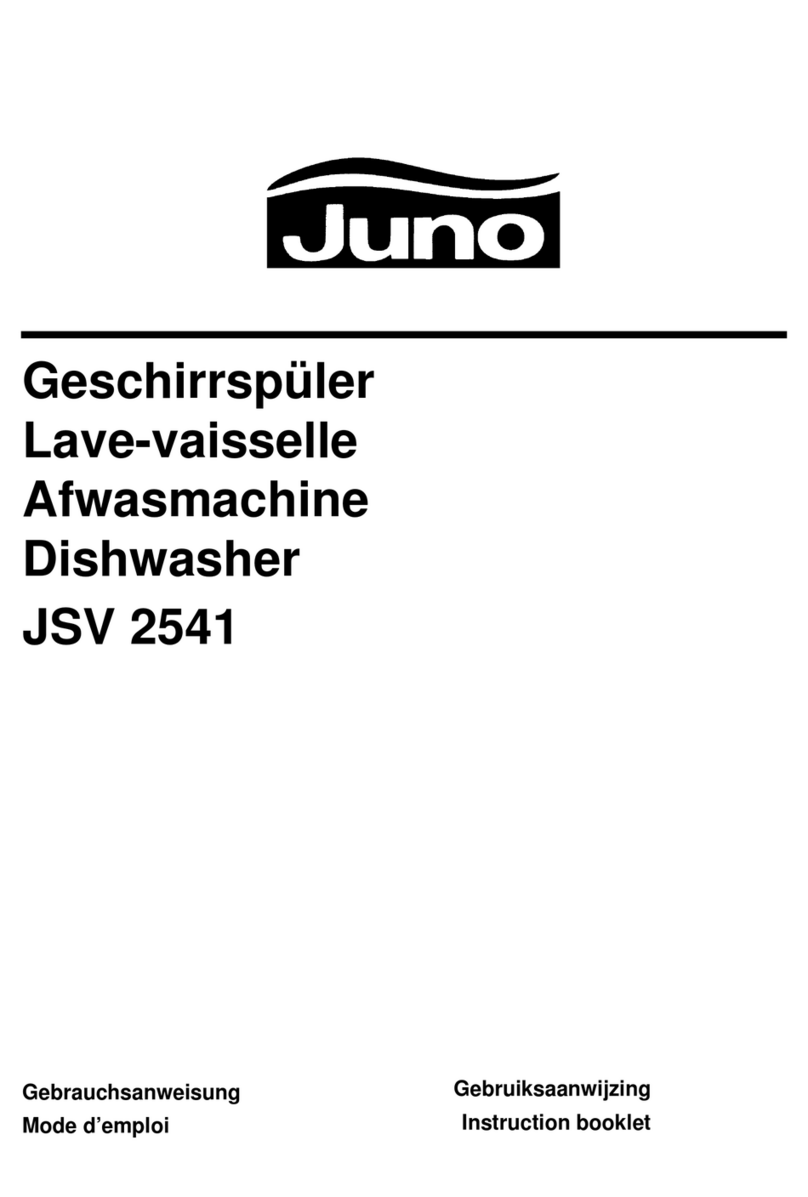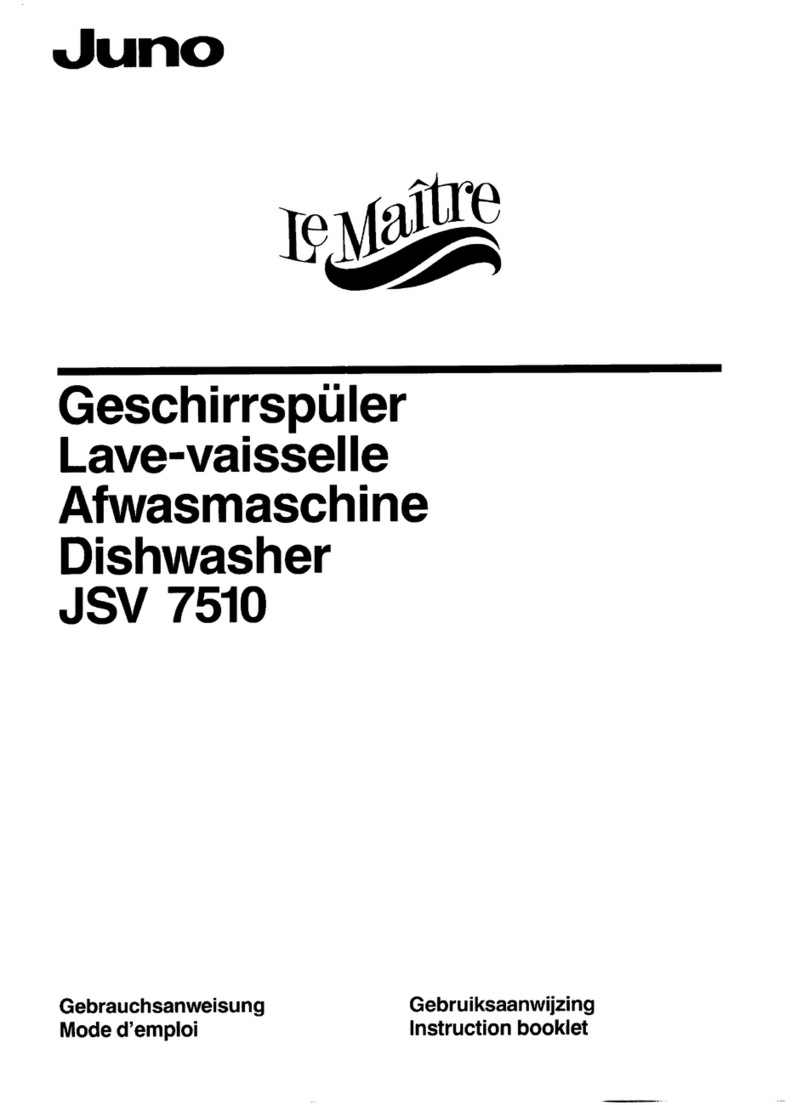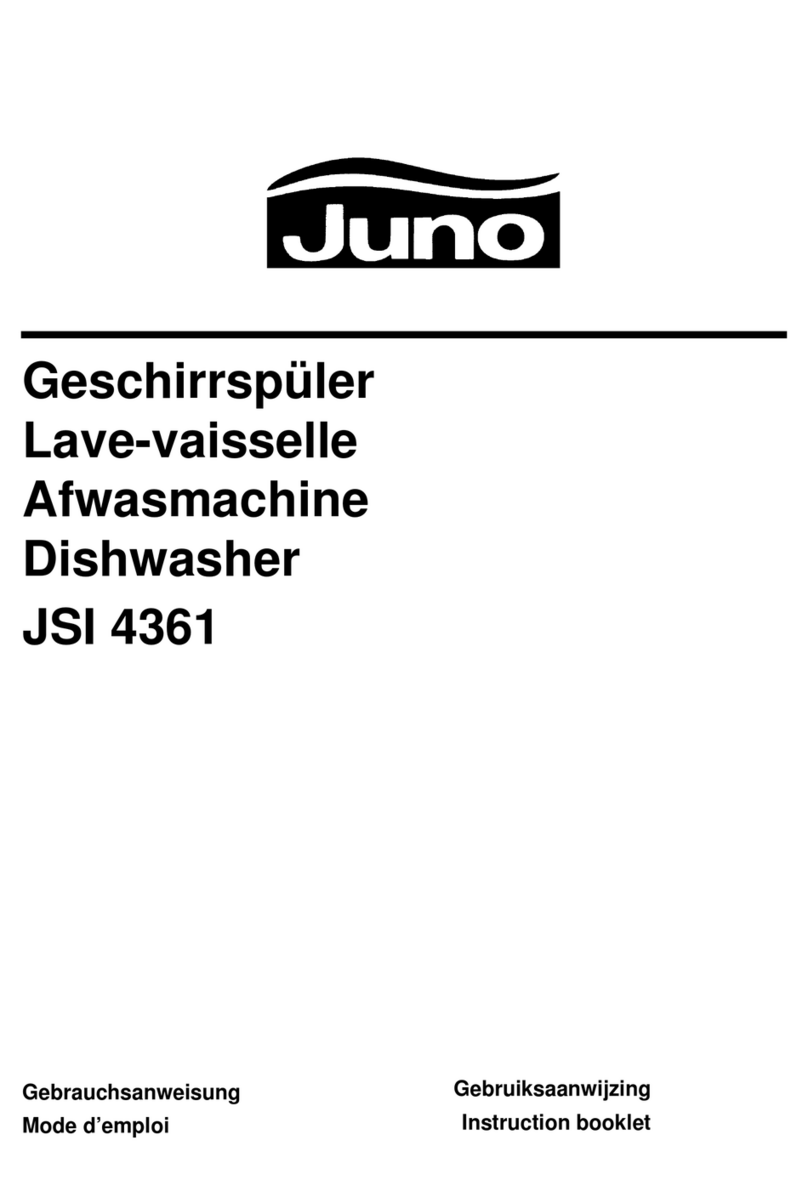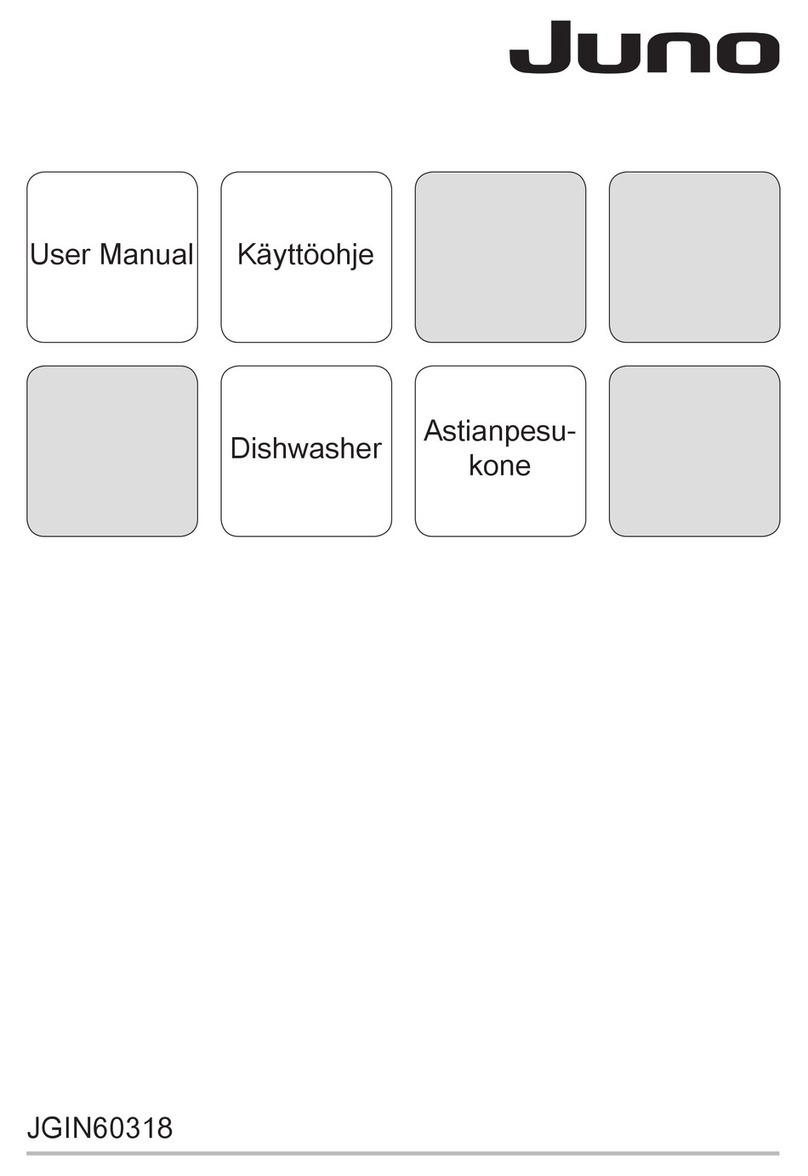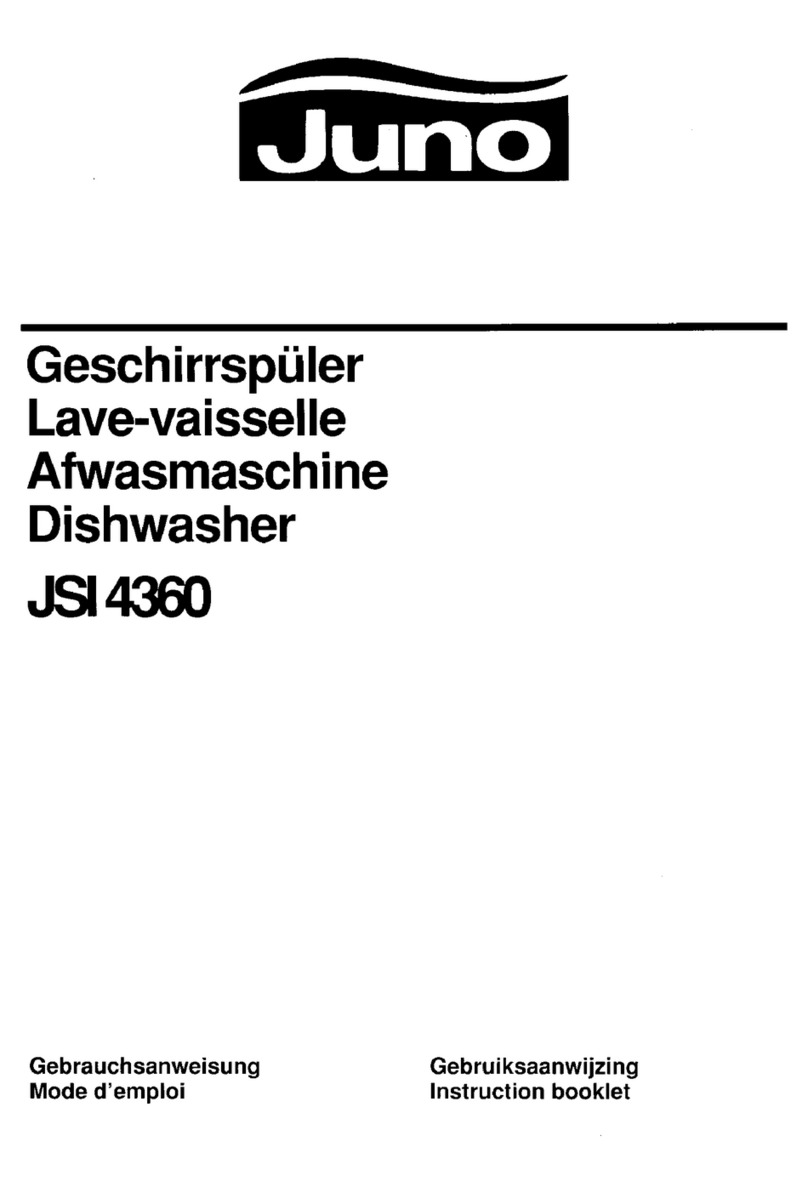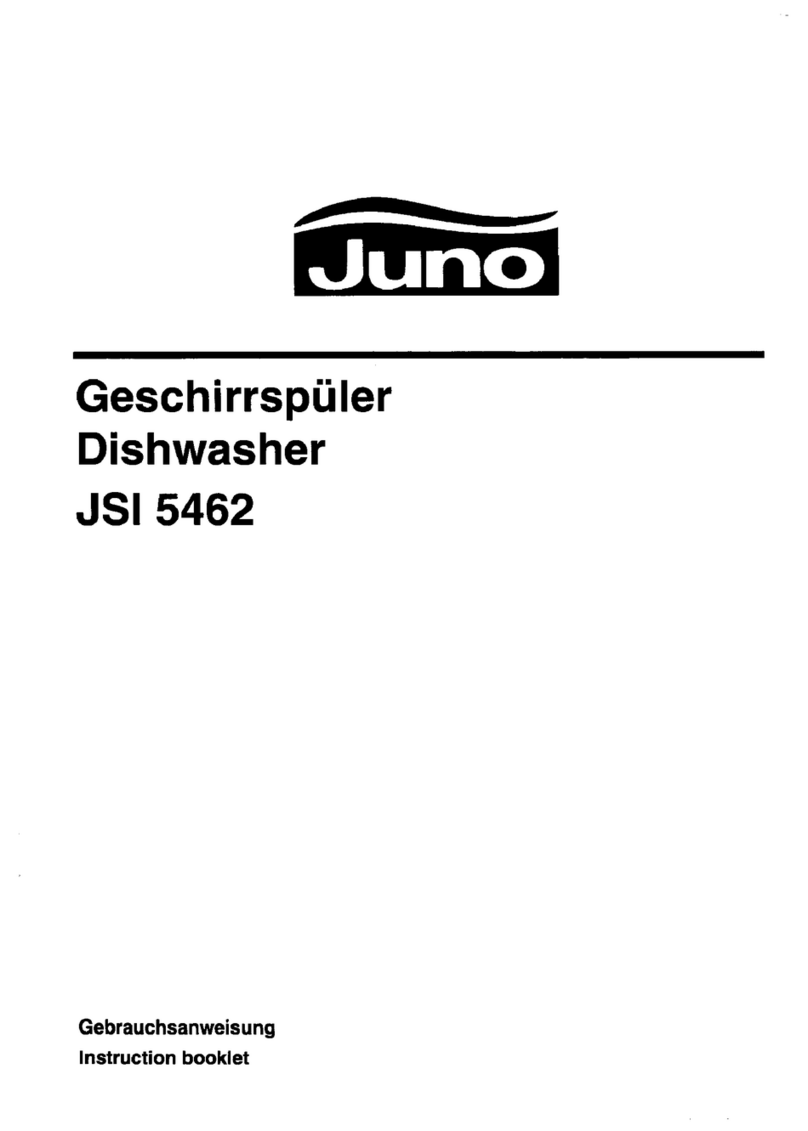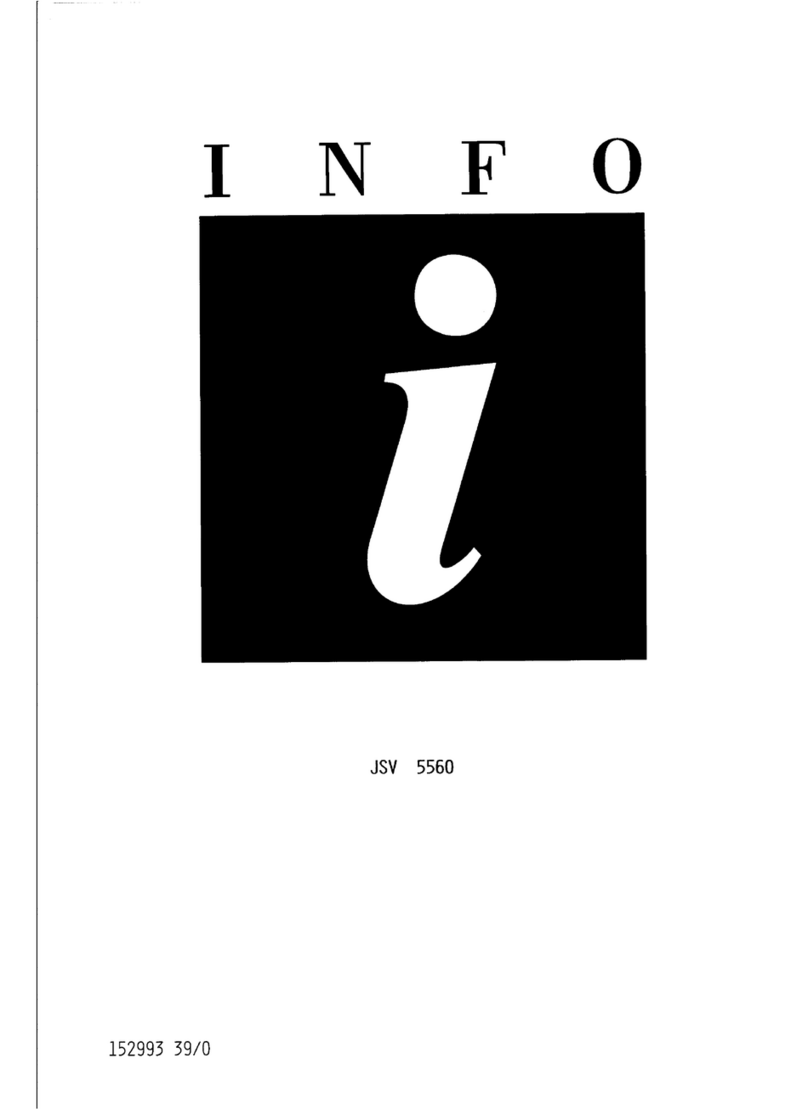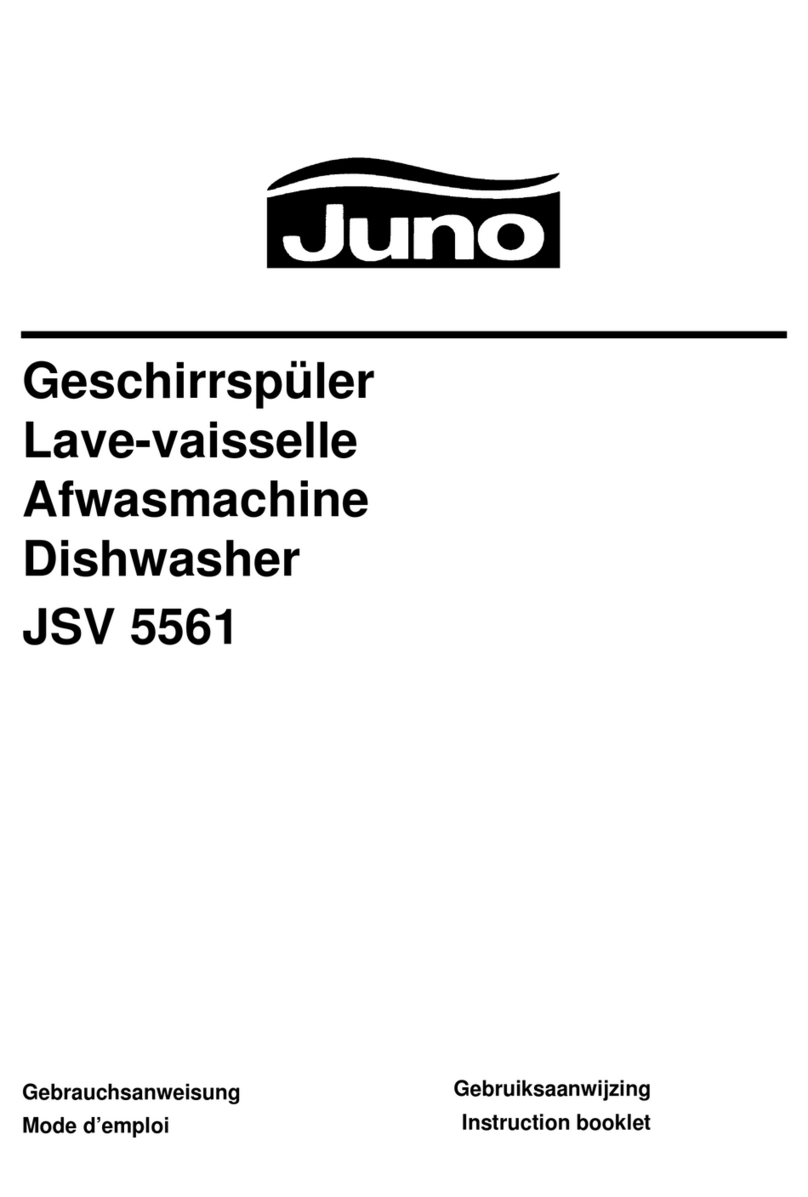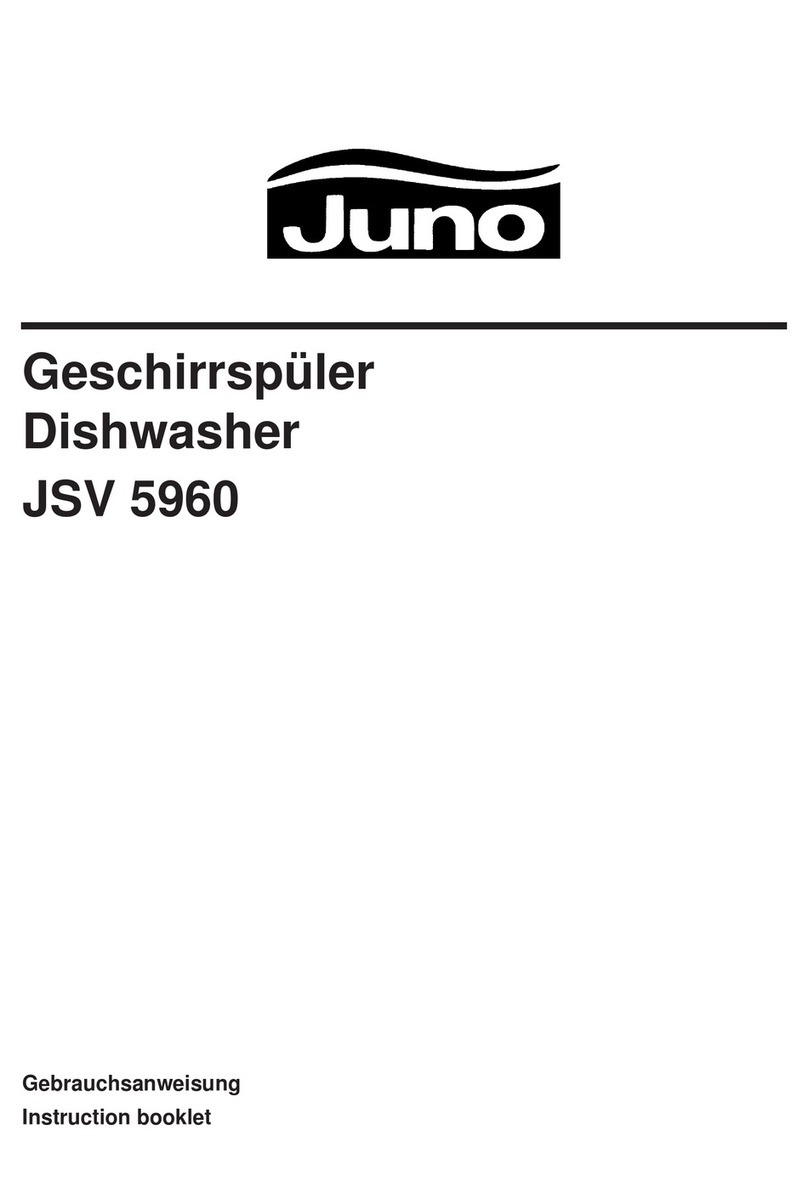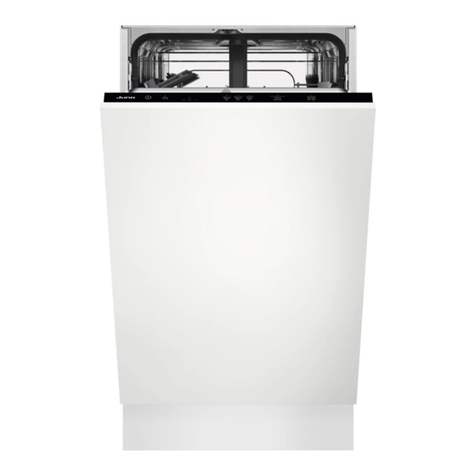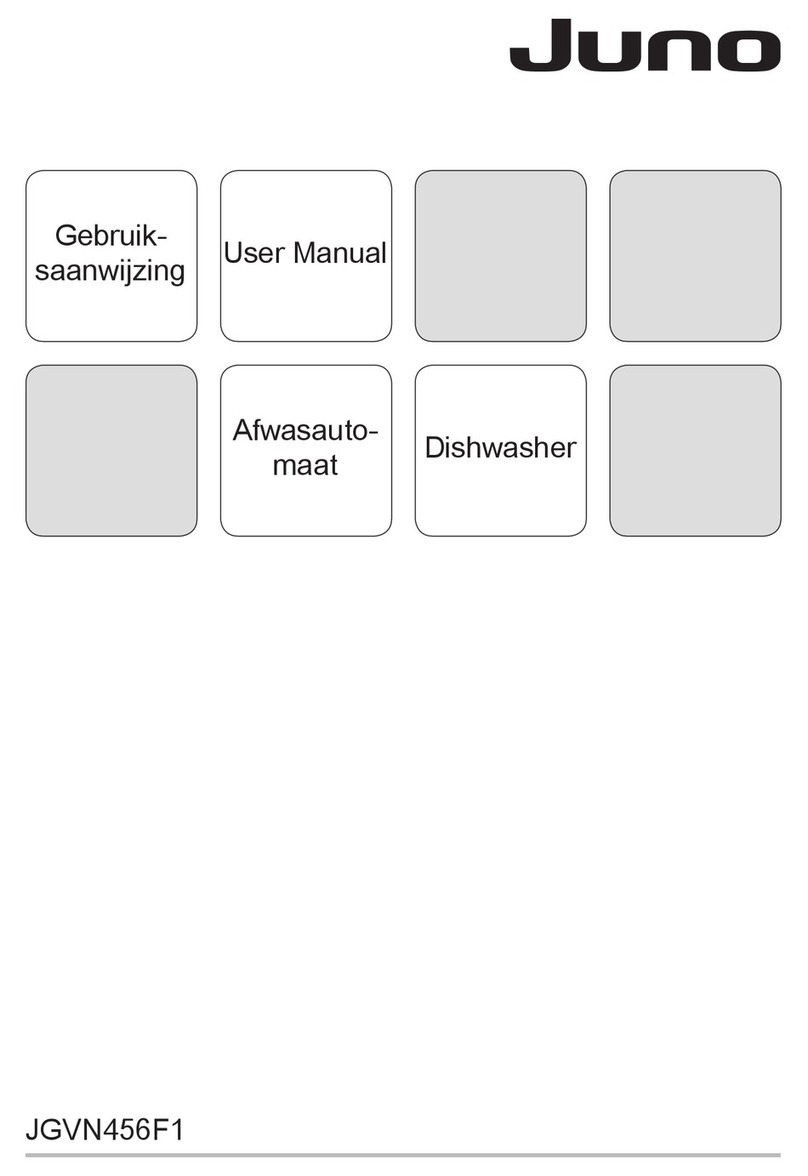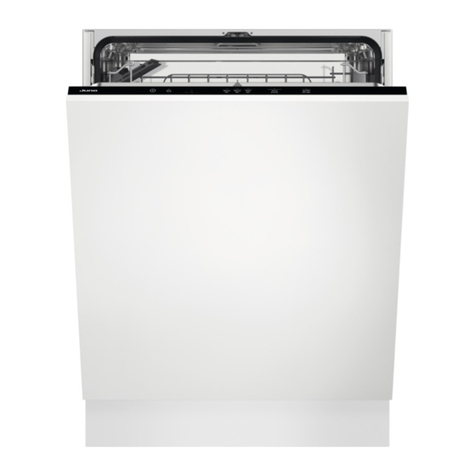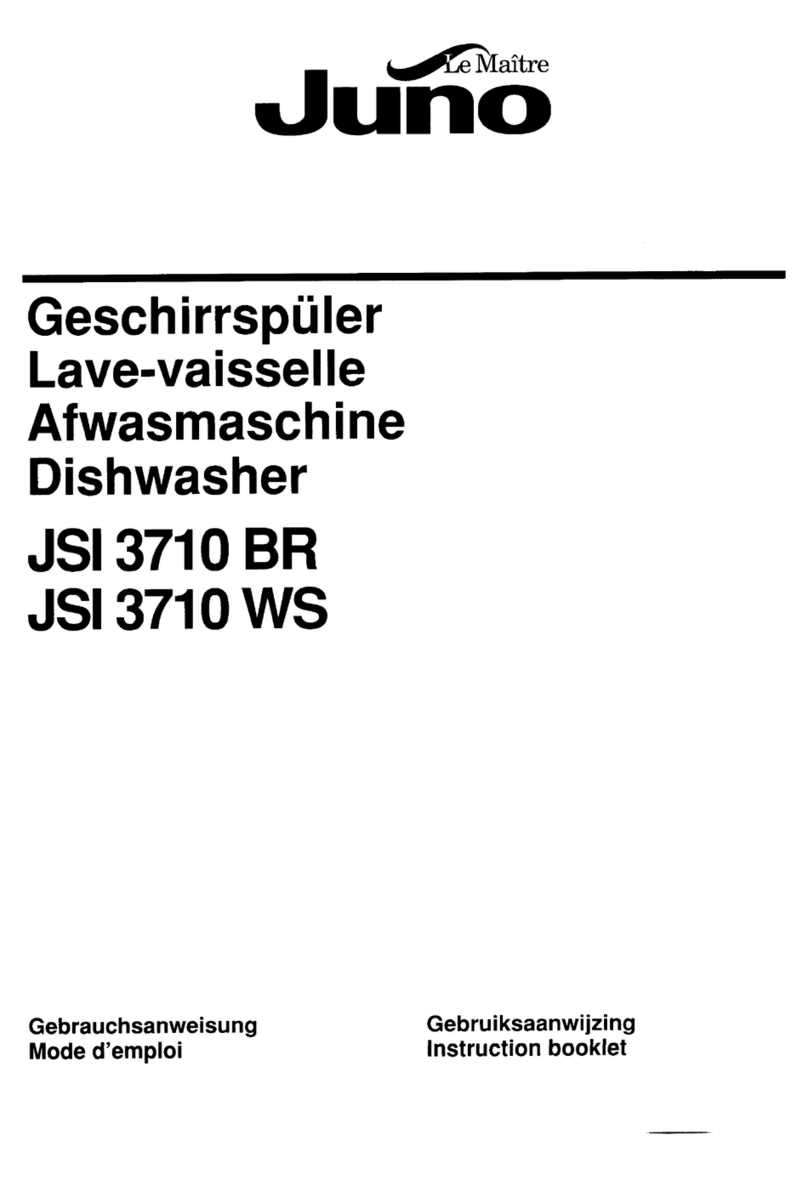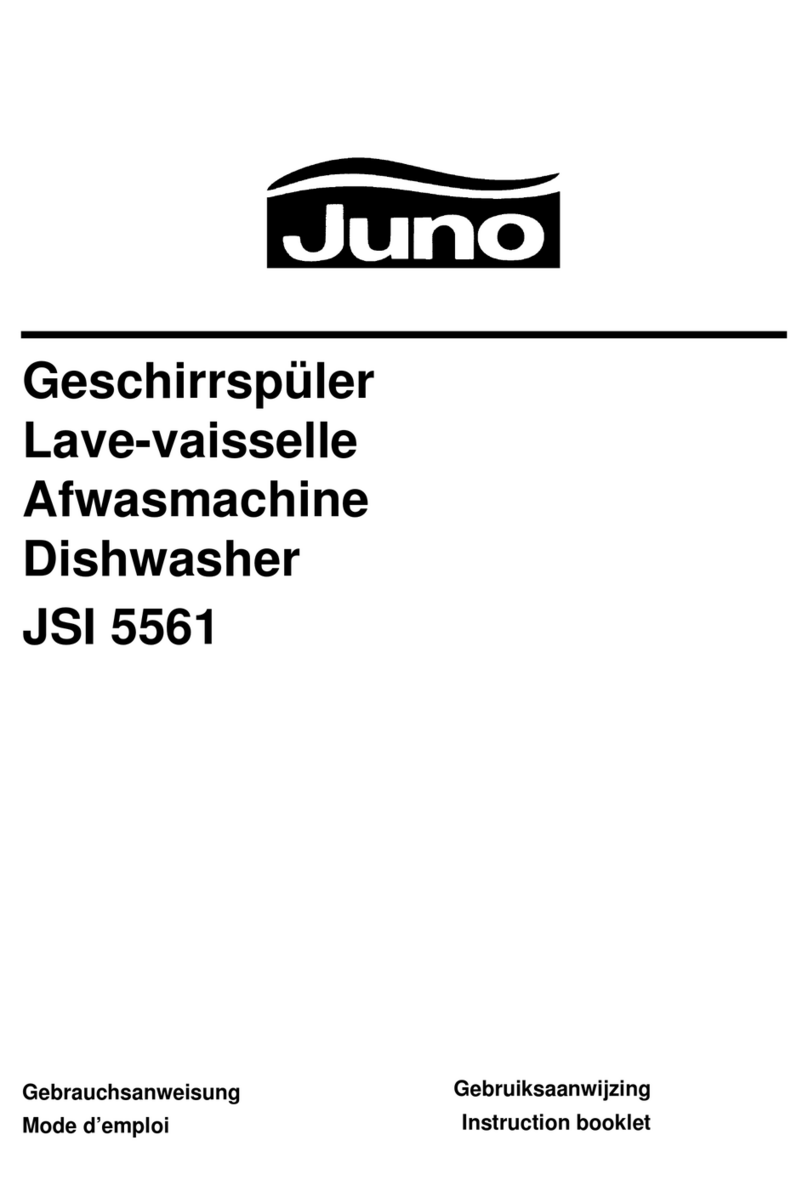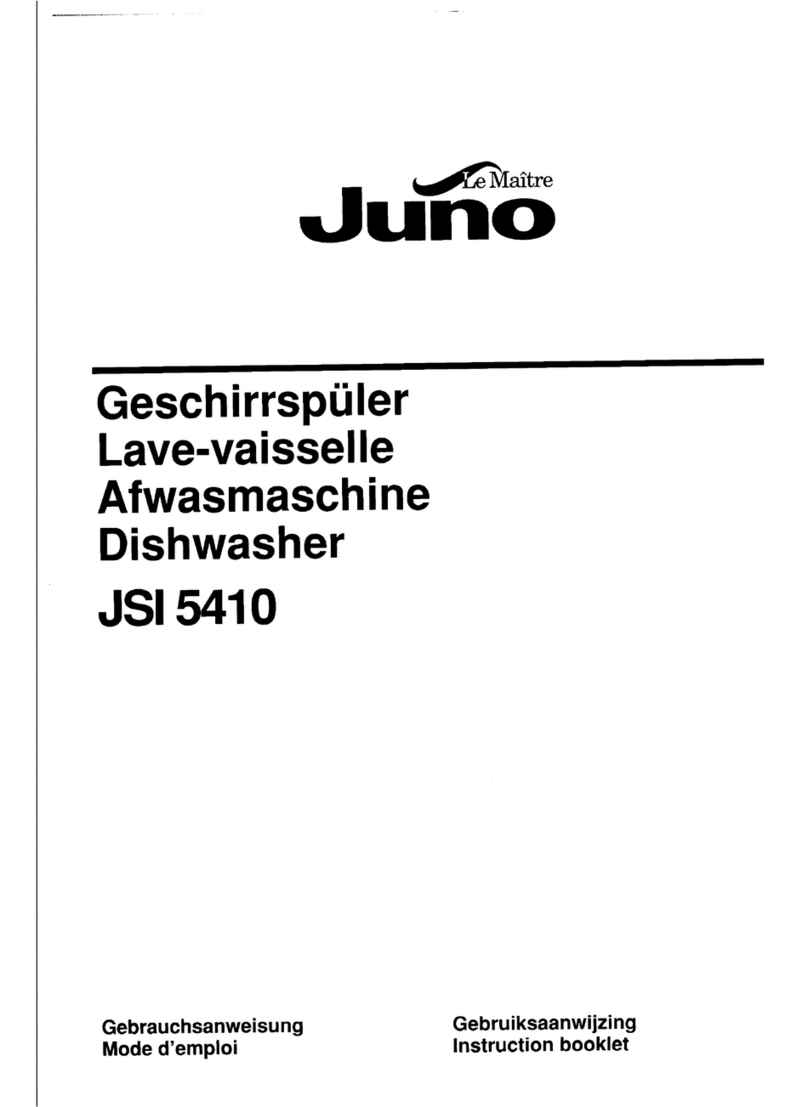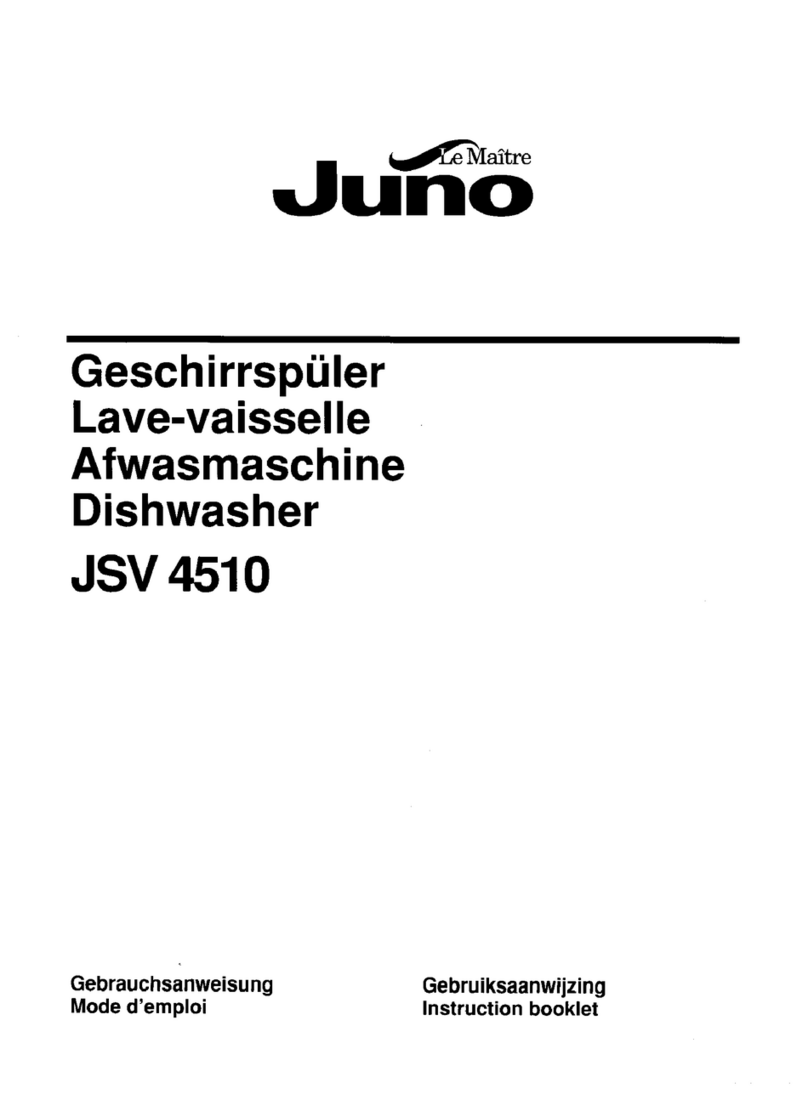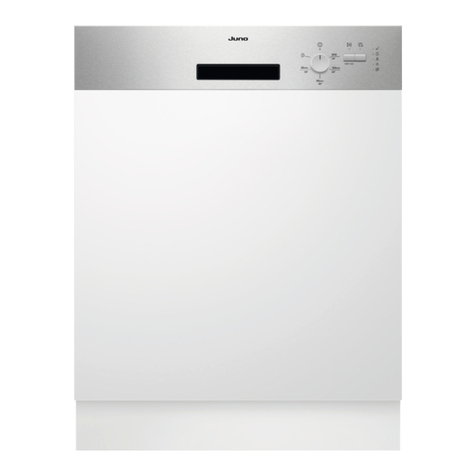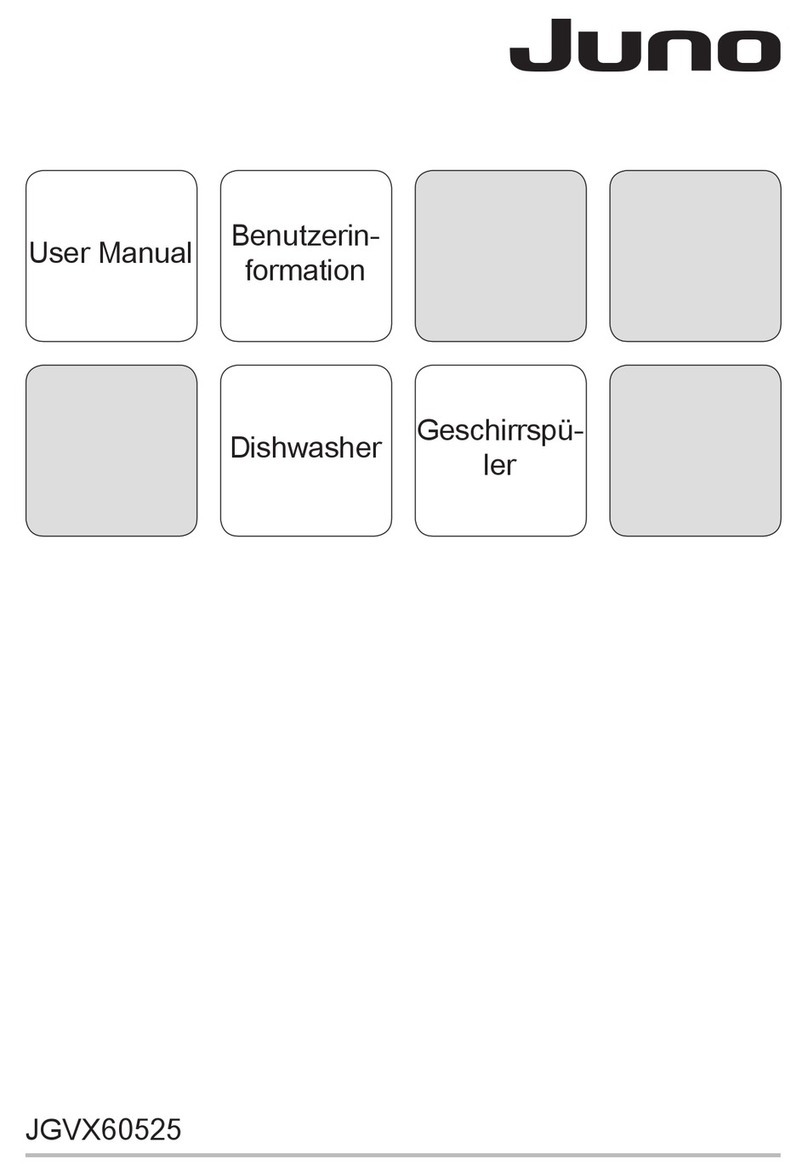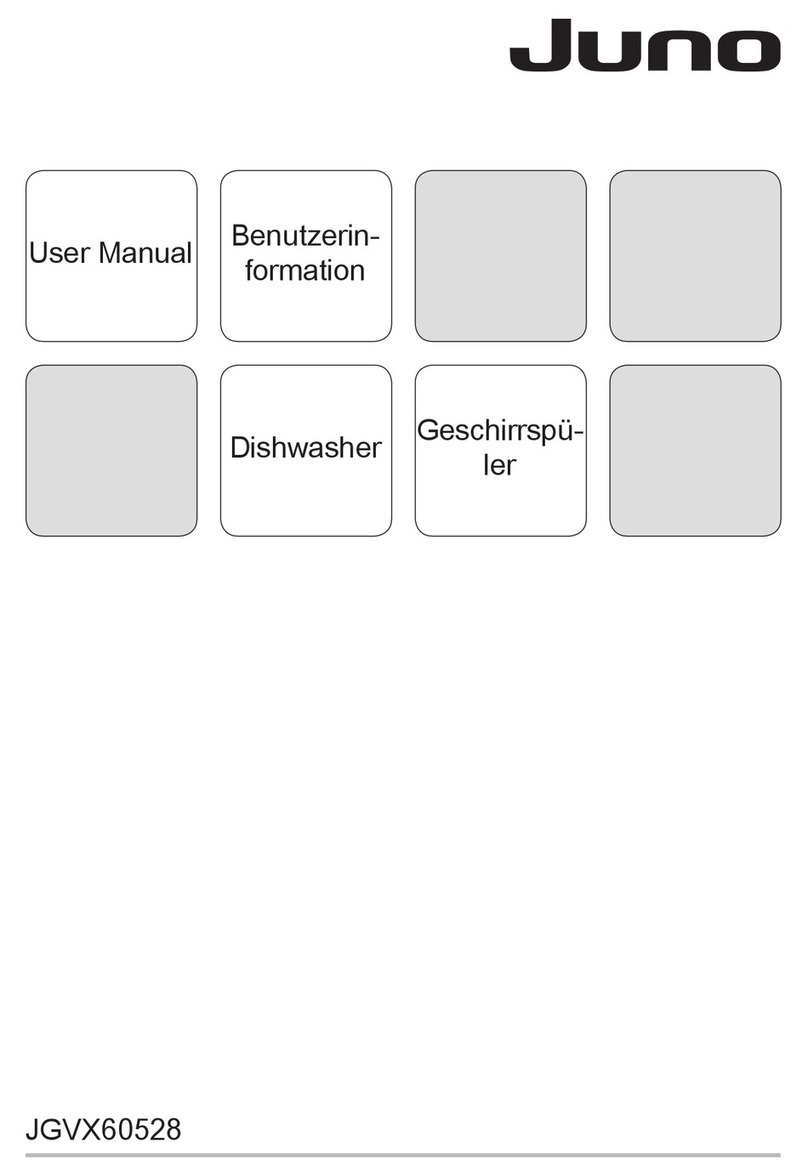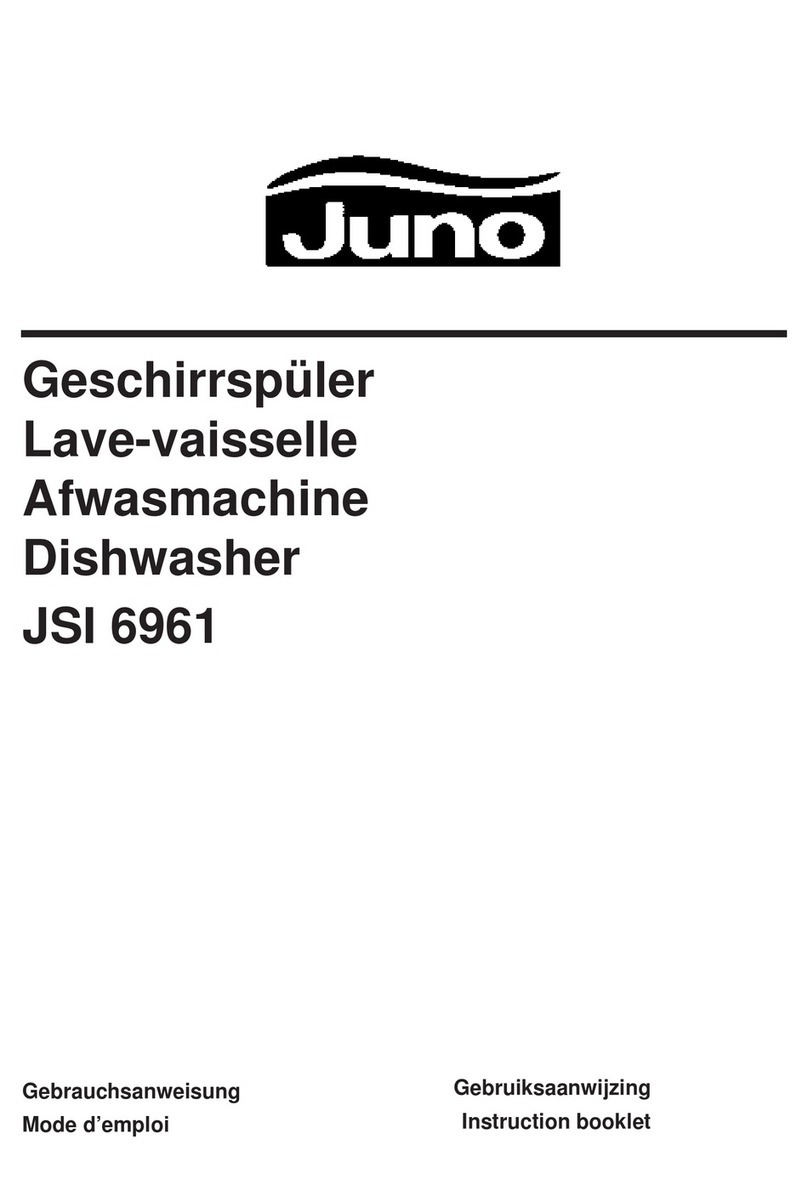PIN18GB
56
INSTALLATION
Remove all packaging before positioning the
machine.
Positioning
If possible, position the machine next to a water tap
and a drain.
The dishwasher features fill and drain hoses which
can be turned either to the left or the right to suit the
installation.
Levelling
Good levelling is essential for correct closure and
sealing of the door.
Loosen or tighten the adjustable support feet, until the
machine is perfectly level.
Water Outlet Connection
The end of the drain hose can be connected as fol-
lows:
to the sink outlet siphon, securing it if necessary with
a clip;
to a wall outlet provided with vent-hole, minimum in-
ternal diameter 4 cm;
The waste connection must be at a height of between
30 cm (minimum) and 100 cm (maximum) from the
floor.
It makes no difference which way the drain hose
faces, either to the right or left of the dishwasher.
Avoid bending or kinking the hose as this could
prevent or slow down the discharge of water.
If you use a drain hose extension it must be no longer
than 2 meters and its internal diameter must be no
smaller than the diameter of the hose provided.
Likewise the internal diameter of the couplings used
for connection to the waste outlet must be no smaller
than the diameter of the drain hose.
Note: The sink plug must not be in place when the
machine is draining as this could cause the water ti
siphon back into the machine.
Clip the outlet hose and the
inlet hose together by means
of the pre-fitted plastic clips.
This makes it possible to
avoid flood damage due to
accidental falling of the outlet
hose. The clips can be easily
moved towards the tap and
fixed as required.
Water Supply Connections
This dishwasher must be plumbed into a cold water
supply and it is preferable for it to be permanently
plumbed in.
The water pressure must be within the limits given in the
technical specifications, as it will not function correctly if
outside these specifications.
For making the connection
itself, the coupling nut fitted
to the machine's supply
hose is designed to screw
onto either a 3/4 inch gas
thread spout, or to a pur-
pose made quick-coupling
tap such as the Press-
Block.
This hose is fitted with a safety device which stops the
water inflow in the event of the internal tube breaking
due to wear. The problem is signalled by the appear-
ance of a red marker in the window (B). If this hap-
pens, shut the water tap and have the hose replaced.
Be sure to incorporate the strainer (A) supplied with
the machine into the joint.
The water pressure must be within the limits given in
the technical specifications, as it will not function cor-
rectly if pressure is outside these specifications.
Note: the end of the hose
connected to the machine
can be positioned as re-
quired, by simply slacken-
ing the retaining ring.
Caution: the retaining ring
must be properly fitted so
as to avoid water leaks.
Re-tighten the ring securely to avoid water leaks.
Avoid bends or kinks in the hose, which could prevent
or slow down the flow of water.
If the machine is connected to new pipes or pipes
which have not been used for a long time, you are ad-
vised to run the water for a few minutes before con-
necting the inlet hose. This will prevent deposits of
sand or rust clogging the inlet hose filter.
Electrical connection
Electrical connection 220 - 230V (50 Hz).
Maximum power absorbed 3.00 kW ca.
The domestic wiring system (including wall sockets,
interior wiring, fuses and electricity meters) should
therefore be adequate and suitable to carry such a
load.
Safety standards require the appliance to be
earthed.
The Manufacturer accepts no liability for failure to
observe the above safety precautions.
B
A
CA01
CA06
min 30 cm
max 100 cm
max 100 cm
+ 2 m max
min 4 cm
Ø 21
Ø 18
Ø 18
Ø 21
CS01
CS03
ENGLISH
